Test automation is crucial for modern software development teams aiming to streamline quality assurance and accelerate release cycles. By utilizing advanced test automation tools, such as Selenium WebDriver, and integrating robust test automation frameworks, QA teams can efficiently manage regression suites and increase coverage. From software testing automation to end-to-end testing, this checklist covers every critical step.
Whether you're using QA test automation software or adopting agile software development practices, this guide ensures nothing gets missed. It’s designed for teams investing in software quality assurance services, optimizing with automation testing methodologies, or exploring AI software development trends. Download the free PDF checklist to implement best practices and evaluate the right software testing tools for your project lifecycle.
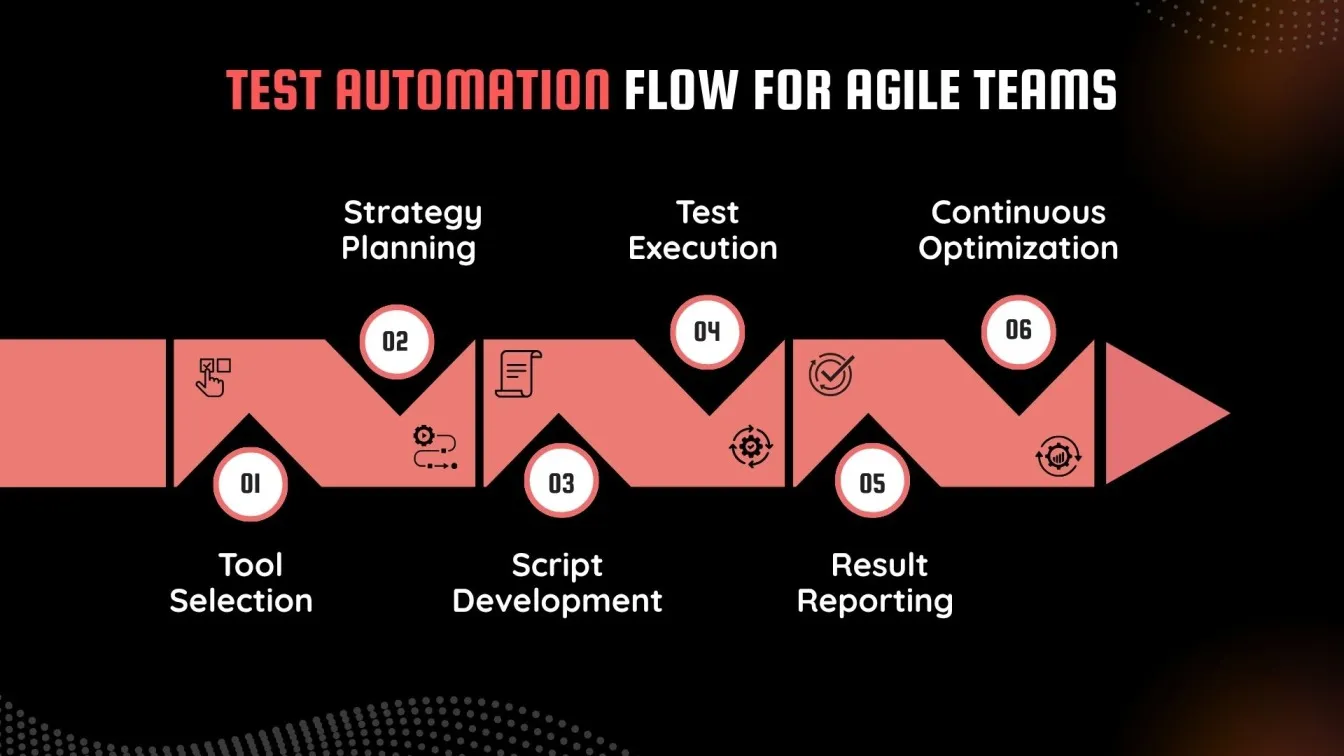
Test Automation Checklist – Free Download
📌 Strategy: Define clear automation objectives aligned with QA and development goals.
📌 Tool Selection: Compare top tools like Selenium WebDriver using a structured checklist.
📌 Environment Setup: Configure secure, consistent test environments with proper test data.
📌 Script Development: Create reusable, modular scripts using optimized templates.
📌 Maintenance: Monitor test result generation and ensure stability through regular updates and fault-tolerant deployment.
Introduction to Test Automation: Why It Matters
In today’s fast-paced software development life cycle, test automation is no longer optional; it’s a strategic necessity. By implementing a smart automation strategy, teams can accelerate releases, reduce costs, and improve test coverage across various application types, including web-based applications and legacy systems.
Here’s why test automation matters:
- Supports scalable, cost-effective automation using tools like Selenium WebDriver
- Enables faster execution and reduced response time.
- Aligns with QA department goals and automation objectives
- Leverages a clear tool selection checklist and test automation suite
- Uses acceptance criteria and real-time testing environments to improve quality
- Guarantees the availability of test data and strong test plan templates.
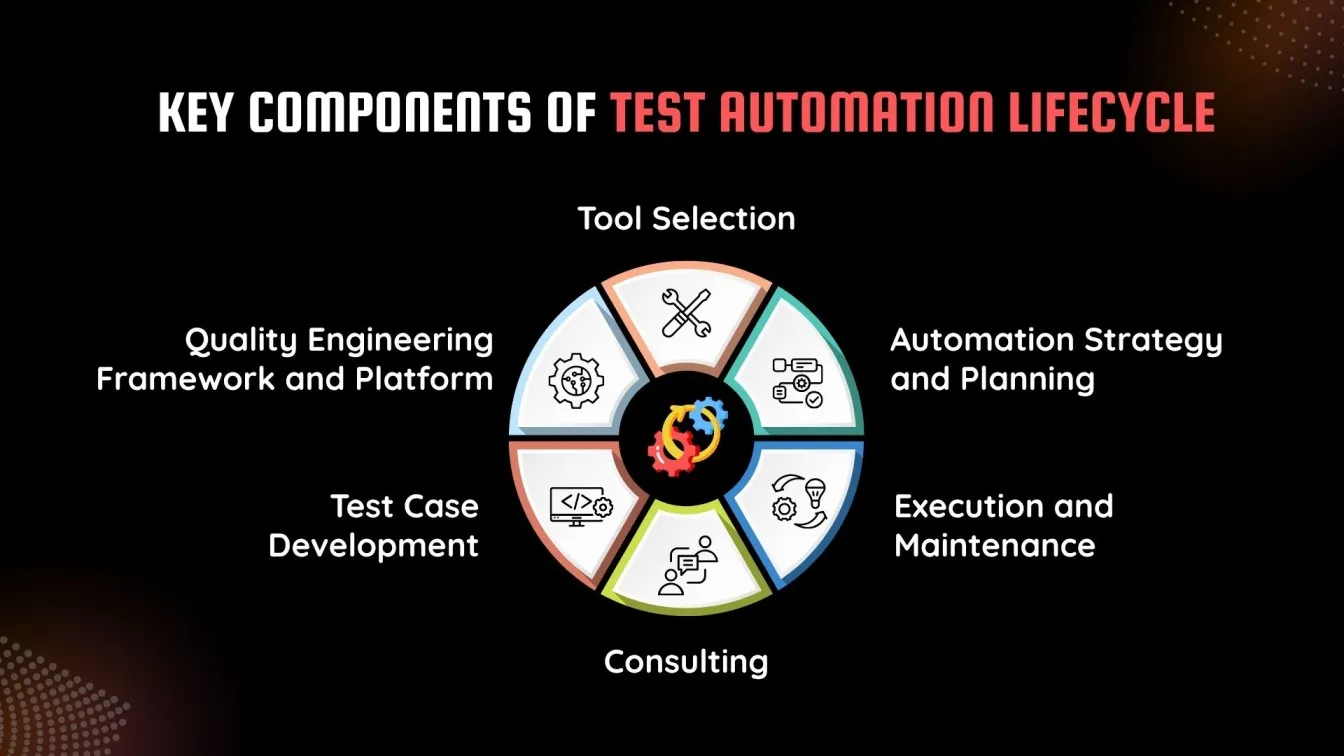
Defining Your Test Automation Goals and Objectives
Setting clear test automation goals is critical to building an effective and scalable test automation framework. Begin with a comprehensive needs assessment to identify coverage gaps, application complexity, and training requirements for your QA department. Define measurable automation objectives that align with your CI/CD pipeline and streamline execution across testing environments.

Incorporate a detailed test automation assessment checklist to ensure alignment on browser compatibility, compatibility testing, and performance testing across platforms. Leveraging tools like Selenium (software) in a GUI environment enables accurate, fast, and repeatable Selenium testing. Prioritize resource management and integration with automated testing tools to maximize ROI, reduce errors, enhance test stability, and prepare for future digital testing needs.
Selecting the Right Test Automation Tools
Choosing the right test automation tools is essential for building a scalable and effective test automation framework. An ideal tool must align with your automation objectives, integrate with your CI/CD pipeline, and support diverse application types, from web-based applications to legacy systems. A strong tool selection checklist should also assess GUI environment compatibility, security testing features, and browser compatibility.
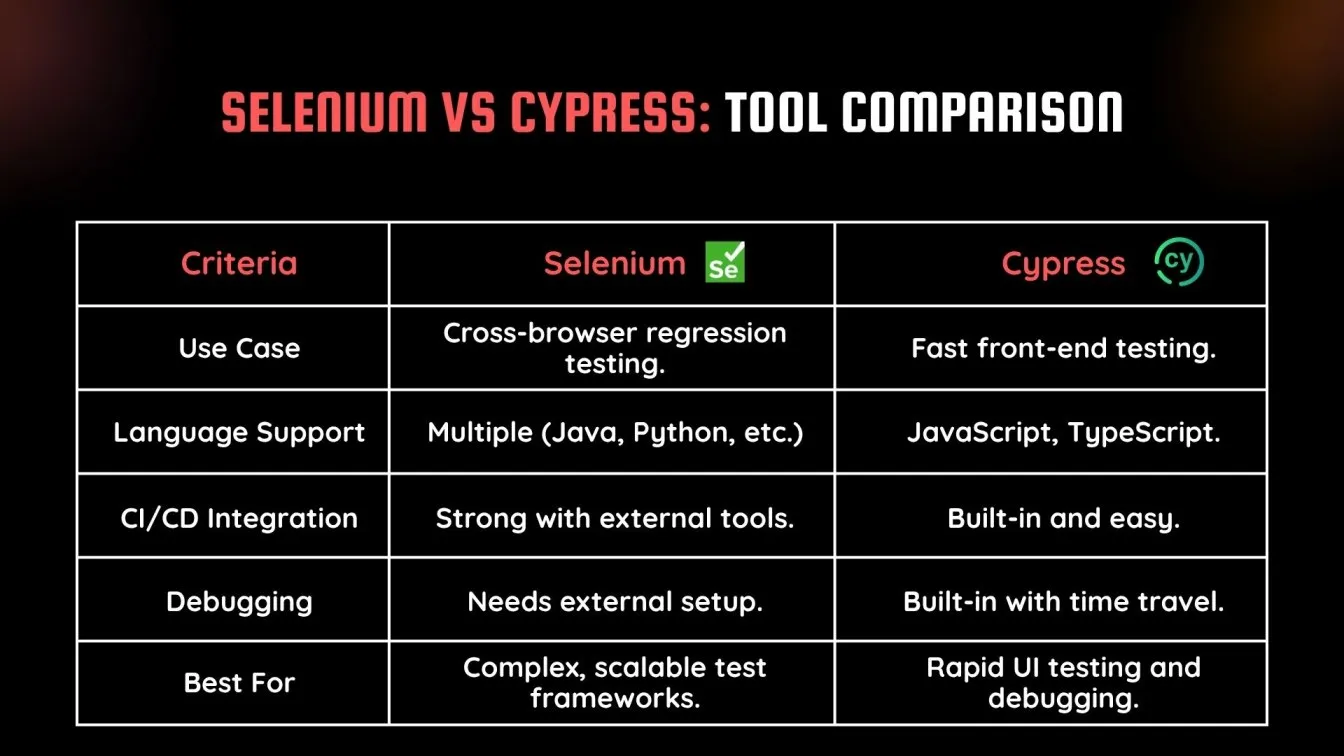
- Selenium WebDriver: An excellent option for Selenium automation testing, perfect for browser-based regression, flexible scripting, and cross-site scripting validation.
- Cypress: Great for front-end digital testing in JavaScript-based apps, offering real-time reloading and easy debugging.
- TestComplete: A commercial automated testing tool supporting both desktop and web apps, known for its intuitive UI and broad test coverage.
- Playwright: A modern tool for performance testing and fast cross-browser automation, compatible with Chromium, Firefox, and WebKit.
- Katalon Studio: An all-in-one automation testing platform ideal for beginners and advanced users, offering built-in support for API, web, and mobile testing.
- Robot Framework: A keyword-driven test automation framework ideal for acceptance testing and behavior-driven development, with strong support for Selenium libraries.
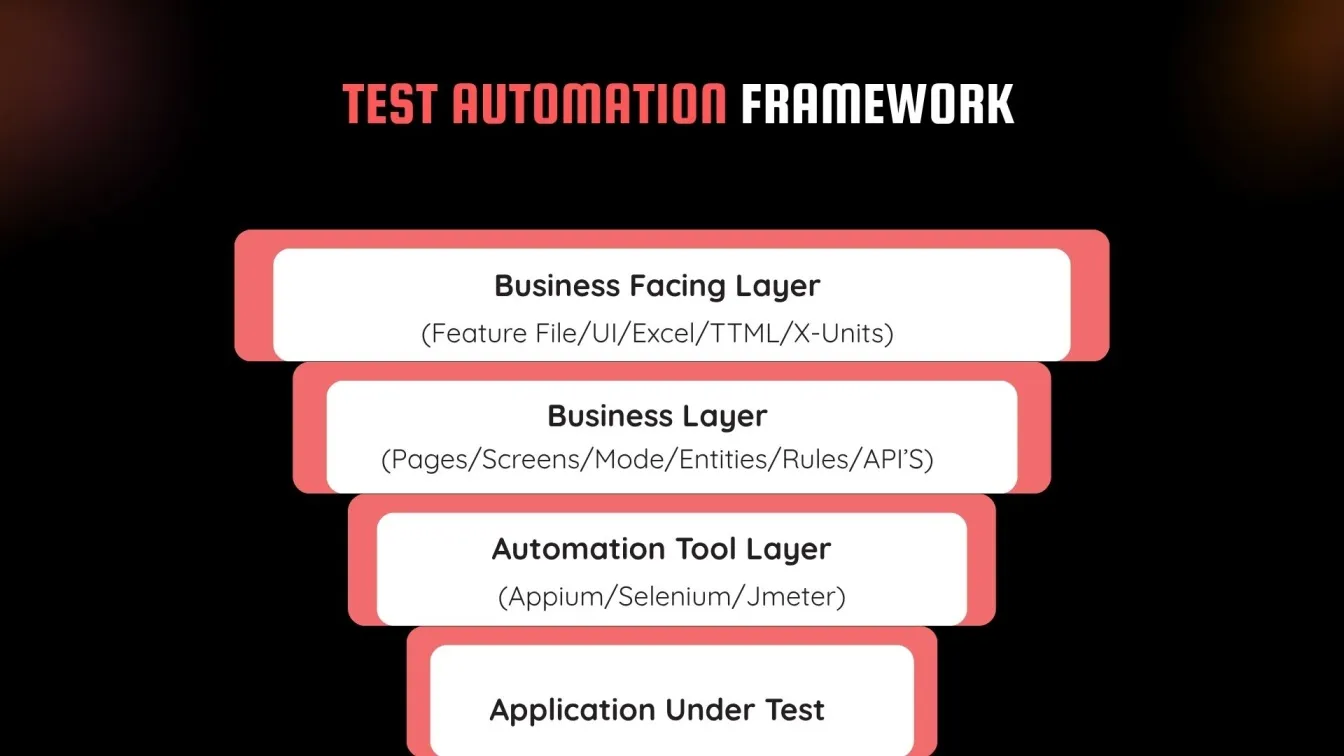
Each tool serves different needs, so matching them with your test cases, team skills, and training needs is key to long-term success.
Setting Up Your Test Automation Environment
In the software testing life cycle, establishing a reliable test automation environment is crucial. Start with a complete needs assessment and define automation objectives that match your QA testing methodologies. Your setup should support different testing environments, including cloud-based, virtual, and on-premise systems.
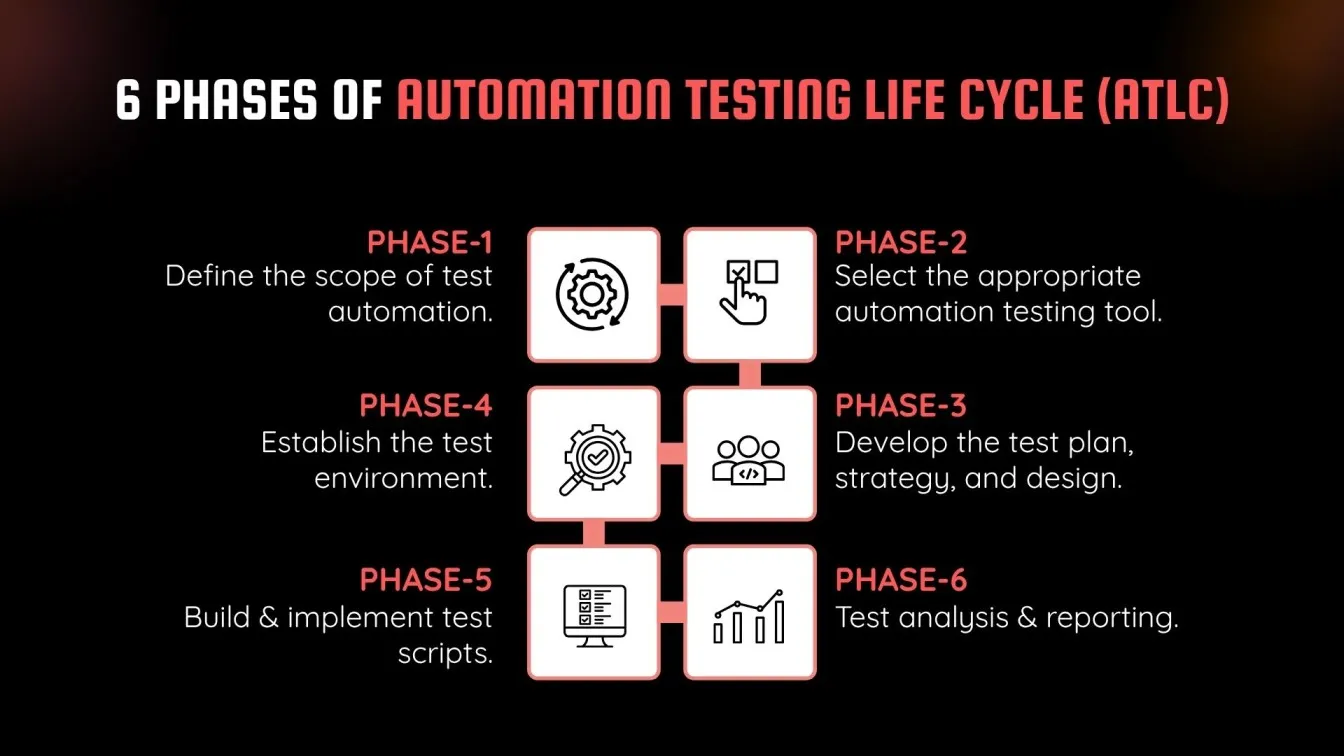
Select a compatible test automation suite that aligns with your software development life cycle. Use qa test automation software to handle GUI environments, compatibility testing, and security testing, such as cross-site scripting.
Steps for Setting Up the Test Automation Environment
- Assess testing needs and platform requirements
- Choose compatible automated testing tools
- Configure browsers, devices, and operating systems
- Prepare structured and reusable test data
- Create a clear test plan template
- Apply performance configurations and validate SSL certificates
- Identify training needs and manage testing resources
Creating a Test Automation Strategy from Scratch
A strong test automation strategy is the foundation of successful software testing automation in modern software development projects. Whether you are launching mobile apps, web applications, or enterprise systems, having a structured plan ensures better test coverage, reduced costs, and faster time to market. This approach aligns with the overall test automation life cycle and drives better results.
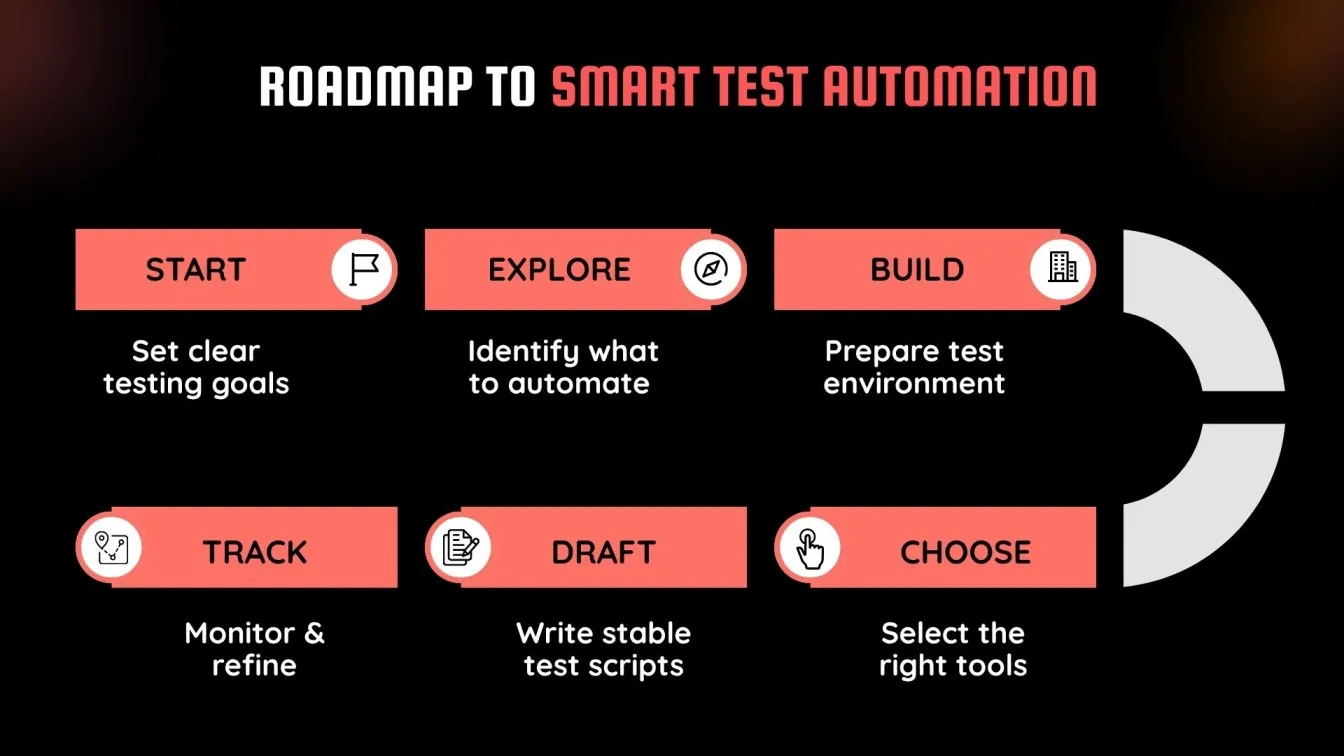
Step-by-Step Guide to Building Your Strategy
- Define Automation Objectives: Align automation goals with your software development life cycle and QA testing methodologies to improve efficiency and coverage.
- Perform Feasibility Analysis: Identify high-impact areas for automation using an automation feasibility analysis, focusing on regression and end to end software testing.
- Set Up Test Environment: Configure a stable test automation environment with proper test data, browser support, and performance configurations.
- Select Tools: Choose the right test automation tools like Selenium WebDriver or other qa test automation software based on your needs and platform compatibility.
- Plan Test Cases: Develop a clear test strategy with reusable test case templates that integrate both automated and manual software testing approaches.
- Execute and Monitor: Run test cases, monitor test results, and refine scripts continuously for better accuracy, coverage, and scalability.
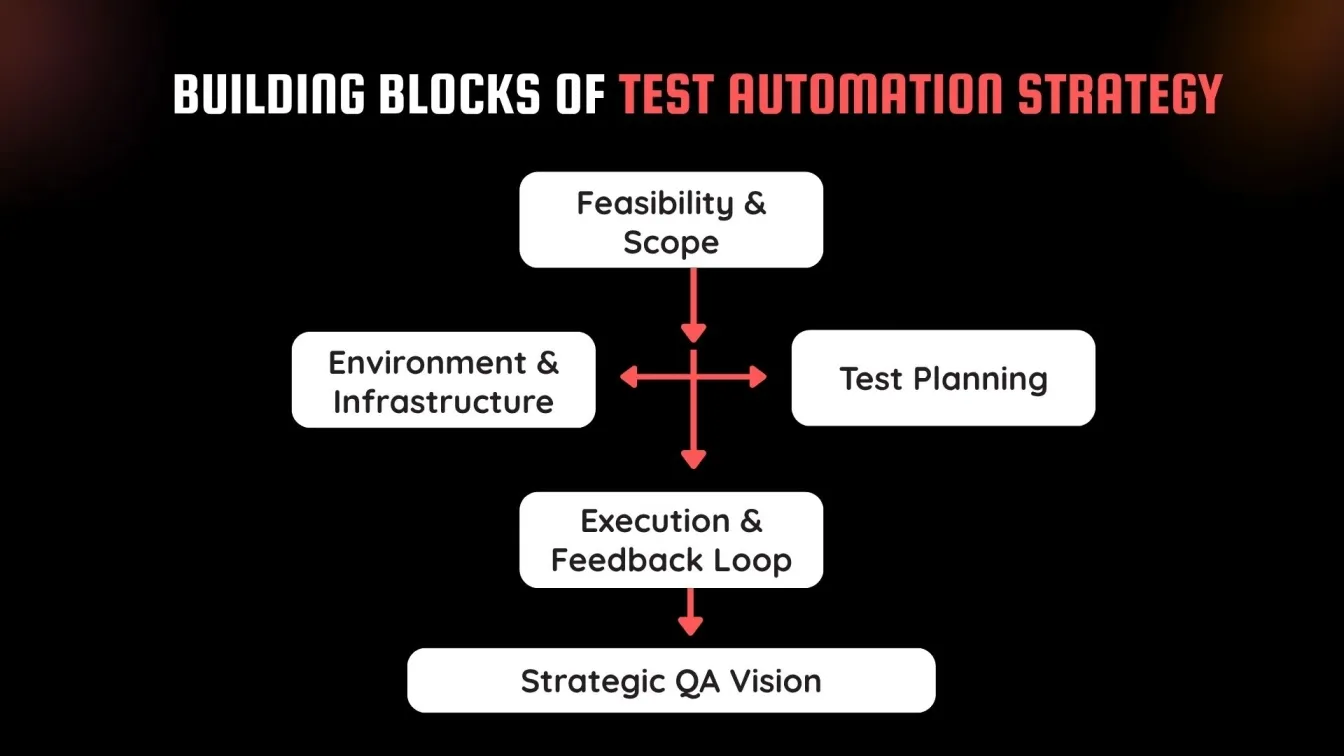
Designing Effective Test Automation Scripts
Well-structured test automation scripts are essential for consistent, scalable, and secure software testing automation.
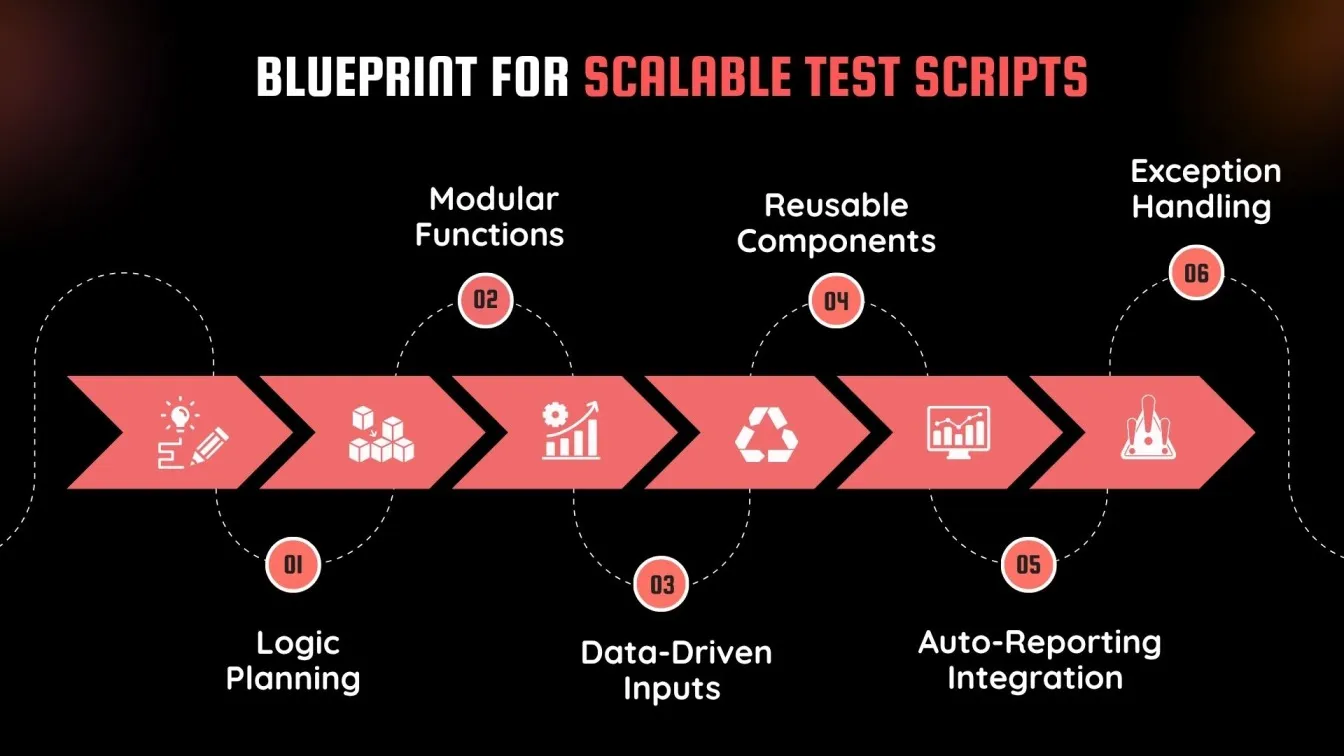
Follow these key steps to build effective scripts:
- Start with Test Case Development: Define detailed test scenarios using a reusable test case template.
- Outline Test Steps Clearly: Ensure each action is documented for reliable test case execution.
- Cover Critical Aspects: Include checks for user acceptance testing, SQL injection, web accessibility, and usability testing.
- Test Across Environments: Validate scripts on various operating systems, web applications, and a secure staging server.
- Focus on Results and Stability: Enable accurate test result generation, fault-tolerant deployment, SSL certificates, and FME Flow Setup for enhanced reliability and user experience.
Managing Test Data for Automation Projects
Managing test data is a vital part of the software testing life cycle in any test automation framework. Clean, reliable data supports accurate test case execution, reduces test flakiness, and ensures quality across web-based applications, mobile apps, and legacy systems. Effective test data strategies must align with your test automation life cycle, mapped within your test strategy.
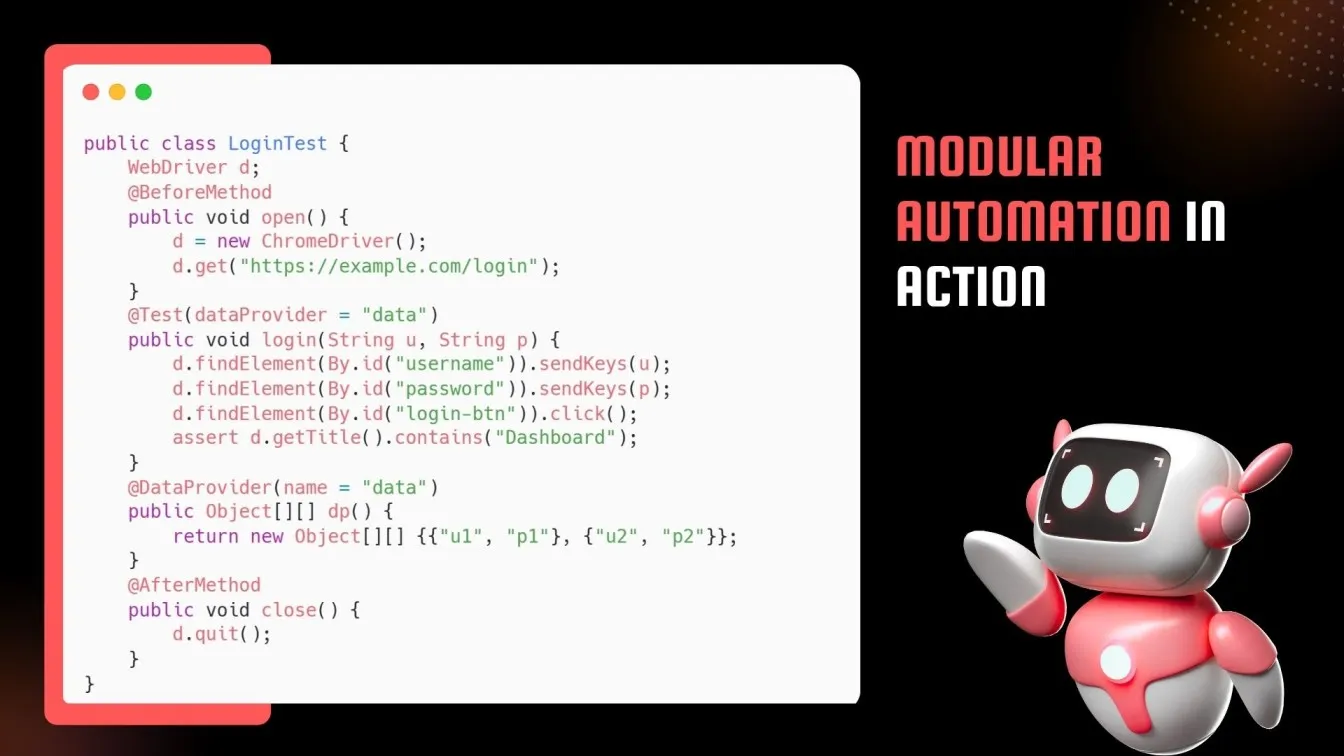
Include test data setup in your test automation assessment checklist and ensure it’s compatible across multiple testing environments and operating systems. Consistent data boosts the accuracy of test result generation and helps validate complex scenarios like user acceptance testing and regression testing. Incorporating strong test data management helps meet automation objectives, reduce errors, and accelerate time to market in modern software development.
Handling Test Automation Across Multiple Environments
Managing test automation across multiple environments ensures accuracy, consistency, and scalability in modern software development workflows.
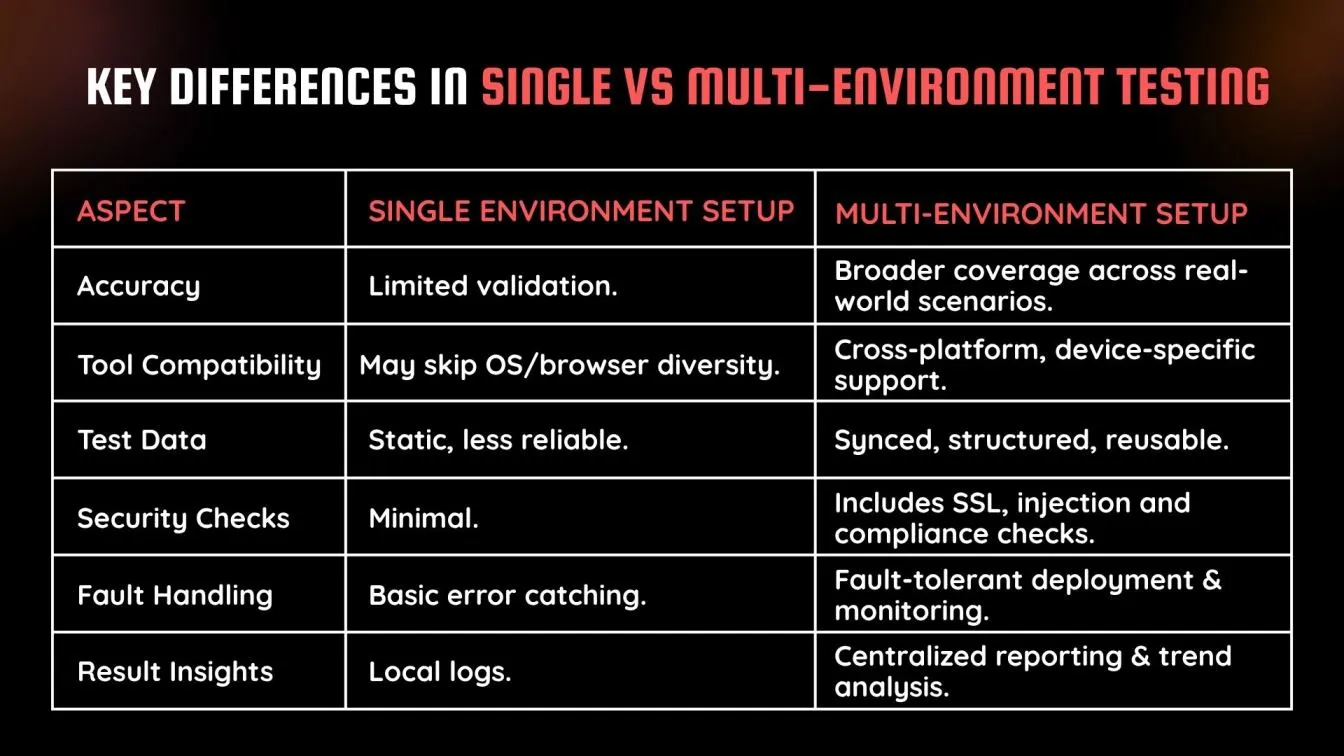
Here's how to handle it effectively:
- Environment Setup: Define a reliable test environment for staging, QA, and production systems.
- Tool Compatibility: Use cross-platform test automation tools that support various operating systems and browsers.
- Test Data Consistency: Sync structured data across environments to ensure valid test case execution.
- Security and Compliance: Validate SSL certificates, detect SQL injection risks, and enforce data privacy.
- Fault-Tolerant Deployment: Configure FME Flow Setup and monitoring to ensure reliable test runs.
- Result Tracking: Maintain consistent test result generation across environments for actionable insights.
This method improves release quality and fortifies your test automation strategy.
Ensuring Test Automation Reliability and Stability
Reliable and stable test automation is critical to achieving consistent results throughout the software testing life cycle. To ensure this, start by developing a structured test strategy with clearly defined automation objectives and properly maintained test case templates. Incorporate regression testing, user acceptance testing, and usability testing to validate different layers of your application.
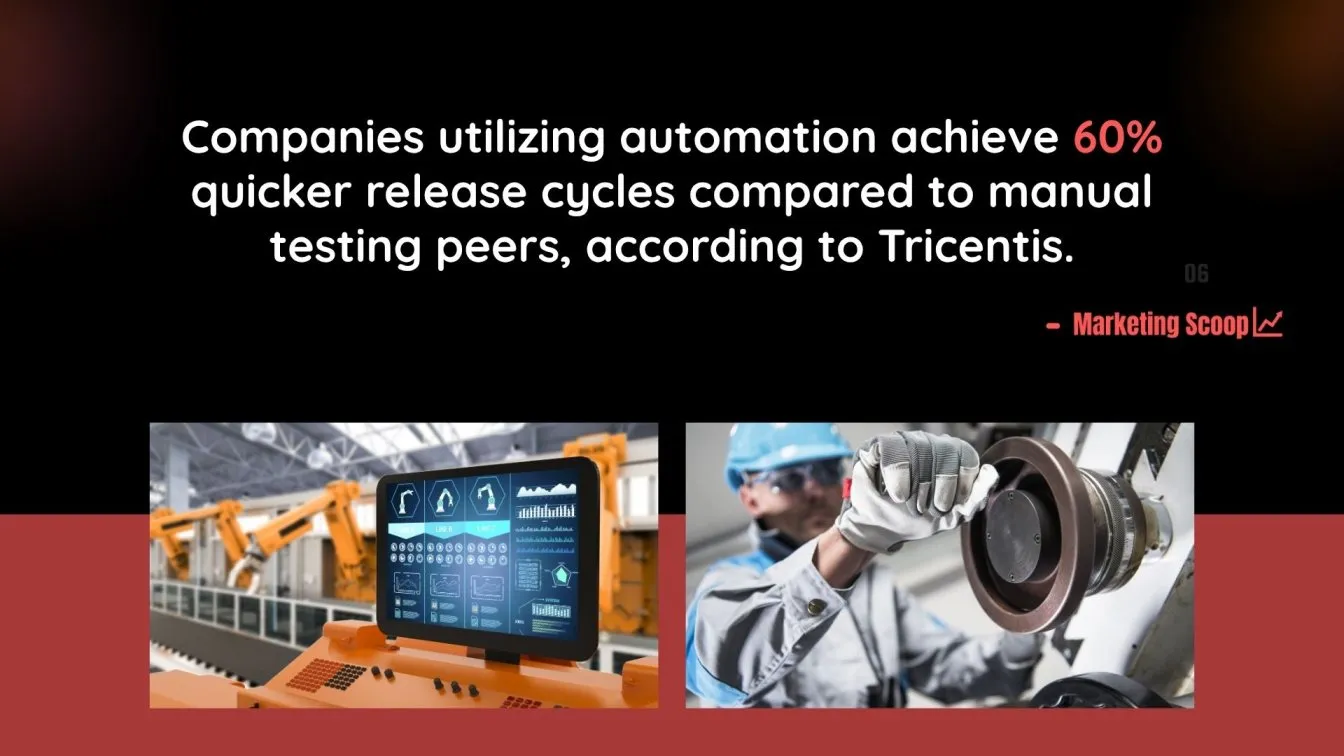
Execute tests in a controlled test environment and monitor test result generation across deployments. Focus on fault-tolerant deployment, manage real-time test data, and validate with secure settings such as SSL certificates. Using dependable test automation tools and following a thorough test automation life cycle leads to fewer false positives, enhanced test coverage, and faster time to market for software development projects.
Maintaining and Updating Test Automation Scripts
Ongoing maintenance of test automation scripts is essential for long-term success in software testing and software quality assurance. Regular updates ensure compatibility with evolving web applications, mobile apps, and changing test environments. Always revise scripts to align with updated test scenarios, adjusted test steps, and the latest test strategy.

Review and update your test case template and incorporate changes based on actual test results. As part of the test automation life cycle, assess automation feasibility, platform updates, and tool performance to reduce errors. Validating against web accessibility and improving user experience also helps optimize coverage. Keeping automation aligned with business goals ensures smoother releases, more accurate regression coverage, and higher confidence across software development projects.
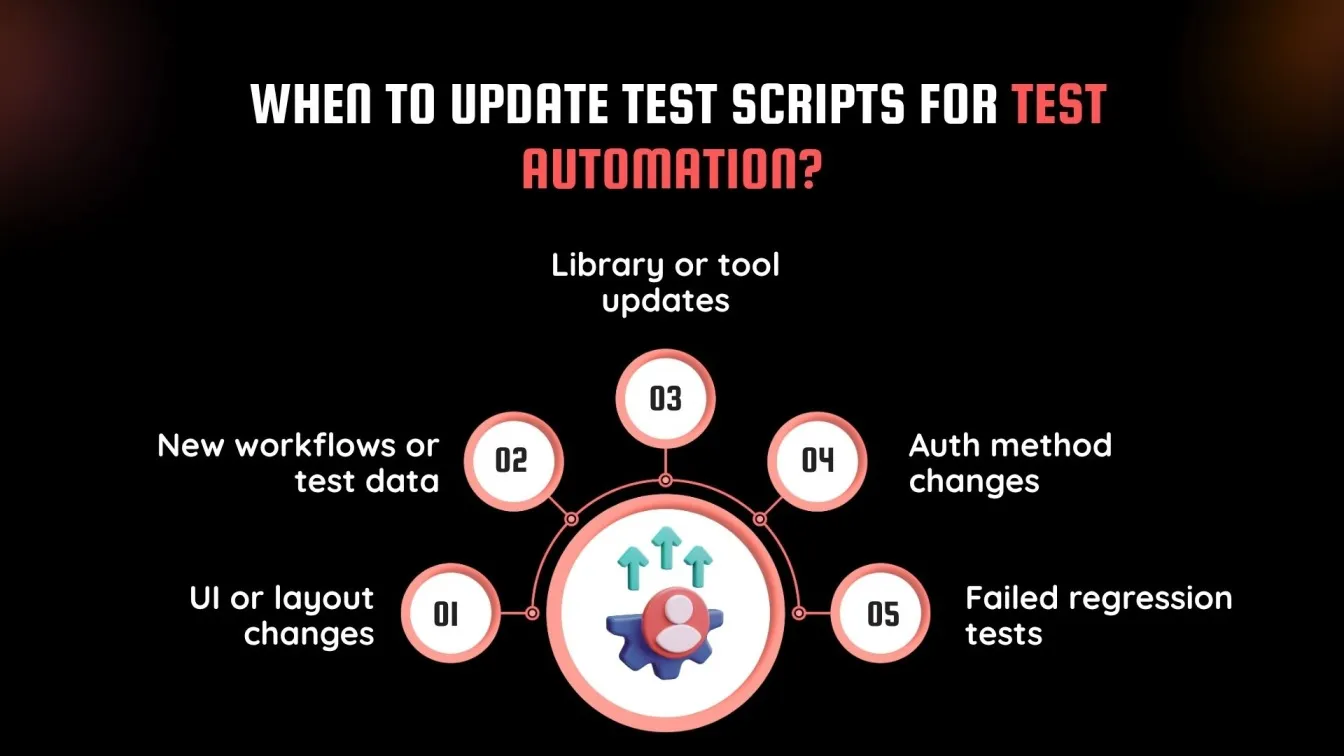
Conclusion: Next Steps for Test Automation Excellence
Achieving test automation excellence requires a strategic approach across every phase of the software testing life cycle. From mapping out the objectives and selecting the right qa test automation software to maintaining accurate test case execution and monitoring test results, every step matters.
Focus on automation feasibility analysis, efficient resource management, and effective training to build a future-ready automation process. Integrate robust tools like Selenium, perform thorough compatibility testing, and ensure security with safeguards like SSL certificates. Establish strong foundations with a reliable test environment, streamlined FME Flow Setup, and optimized test automation suite. Align your automation roadmap with evolving software development goals to accelerate time to market and enhance long-term quality.
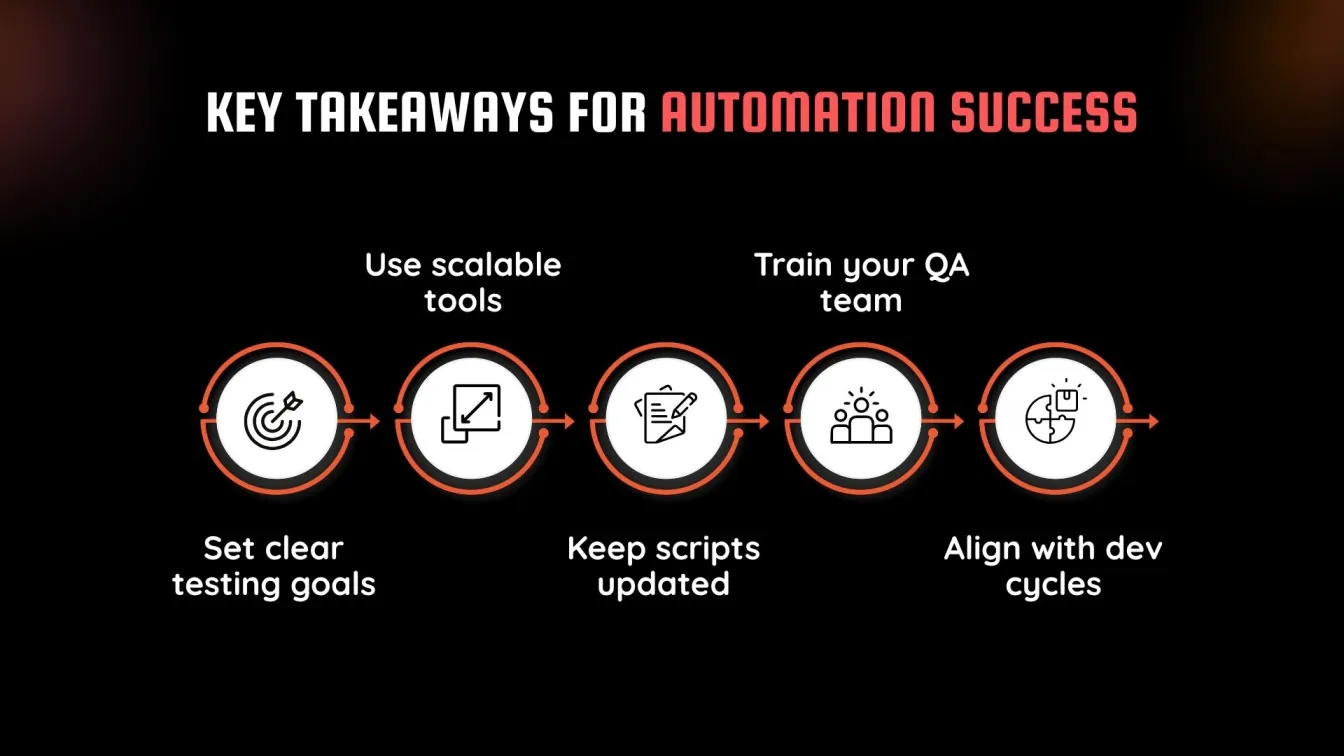
To maximize automation ROI, companies should explore test automation services that go beyond tool usage. Choosing the right software testing services and software test automation tools helps ensure greater accuracy and coverage. Leveraging software quality assurance testing services and modern software testing methodologies enhances reliability. Incorporating quality assurance software and aligning with quality assurance in software testing principles ensures every software release meets high-quality benchmarks across functionality, performance, and user experience.
Frugal Testing offers functional testing services, load testing service, and AI-driven test automation services, making it a reliable software testing service provider.
Download our free Test Automation Checklist PDF to ensure no critical step is missed—from setup to execution and optimization.
People Also Ask
1. What is the alternative to Jira automation?
Alternatives to Jira automation include tools like Azure DevOps, Trello with Butler, Asana, and GitLab, offering customizable workflows and integration with CI/CD pipelines.
2. How can I ensure test automation reliability in CI/CD pipelines?
Use stable test environments, maintain up-to-date test data, integrate fault-tolerant deployments, and monitor test result generation during every CI/CD cycle.
3. What are the Agile checklist benefits?
Agile checklists improve sprint consistency, ensure critical testing steps aren't missed, and align development with QA through structured test case execution.
4. What is the role of AI in modern test automation?
AI in test automation helps create self-healing scripts, identify flaky tests, and enhance test coverage. It accelerates testing cycles and improves reliability in CI/CD pipelines.
5. How to manage script dependencies?
Use version control, modular scripting, and dependency management tools like Maven or npm to organize, track, and update shared components efficiently.
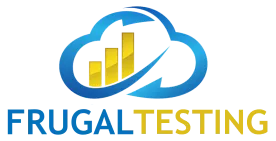


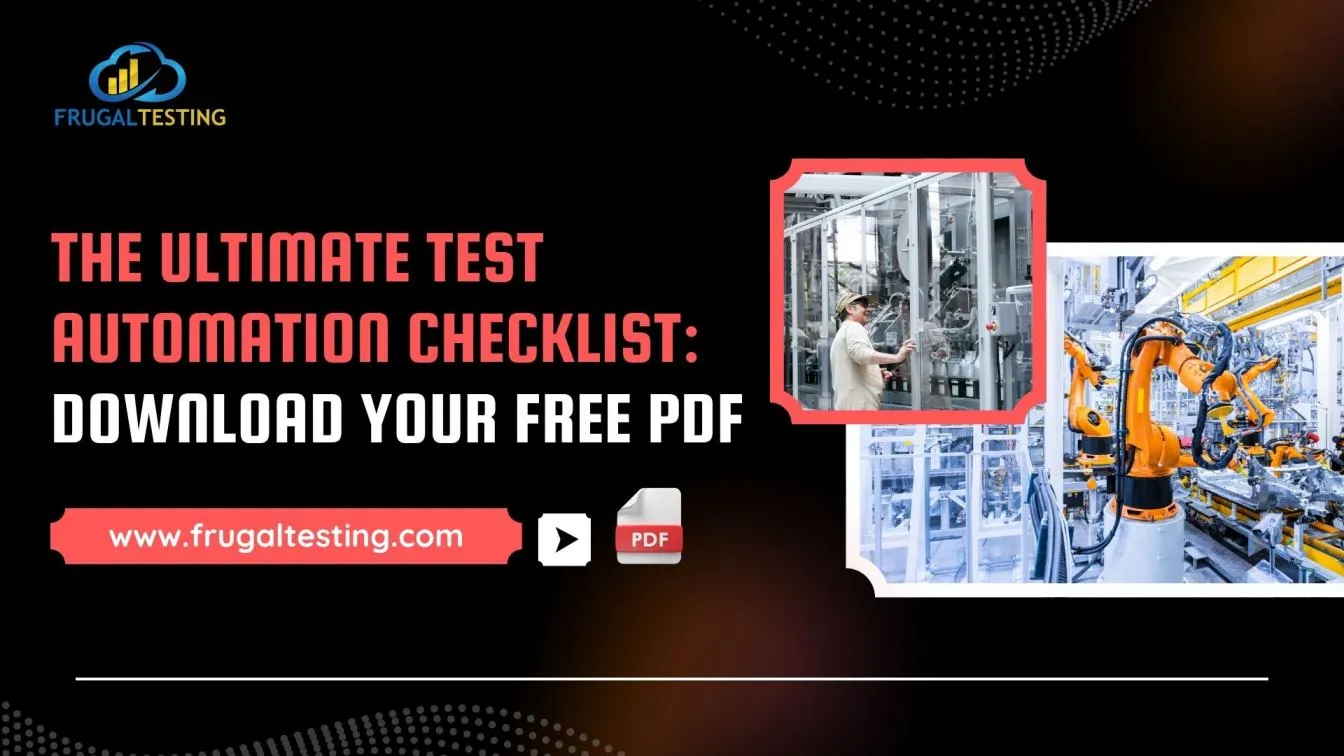

%201.webp)

